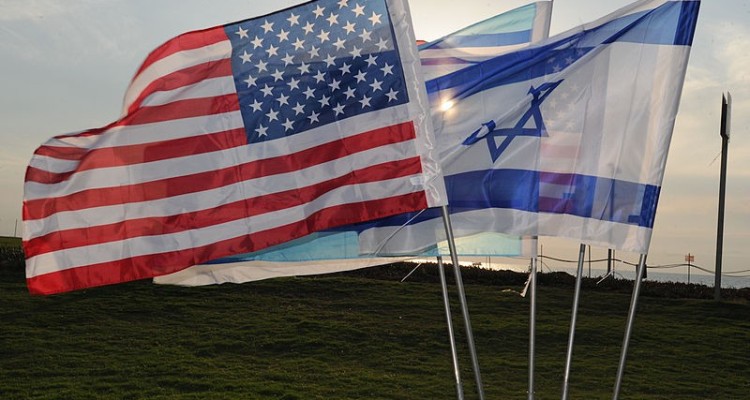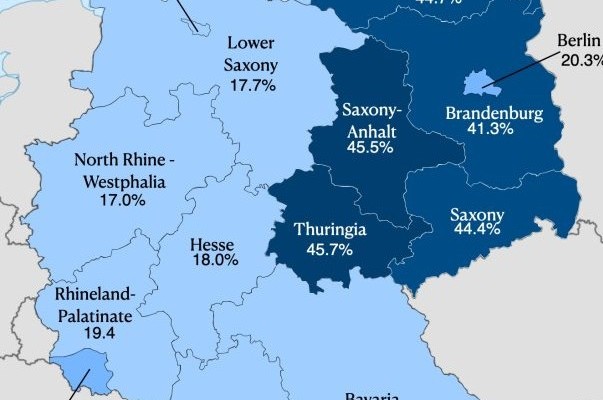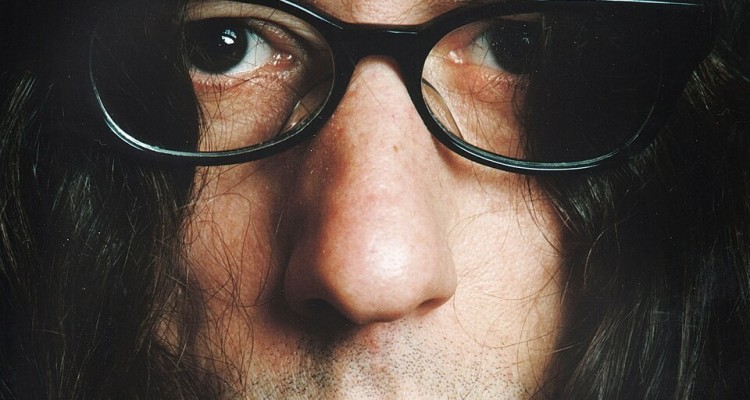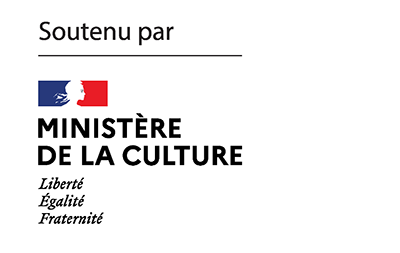In 2015, the British Prime Minister David Cameron announced the construction of a new Holocaust memorial and world-class learning center. Since then, the project has been racking up delays and stirring up various controversies. Journalist Liam Hoare investigated this project for K. and, more broadly, the issues of Holocaust remembrance policy in Britain.
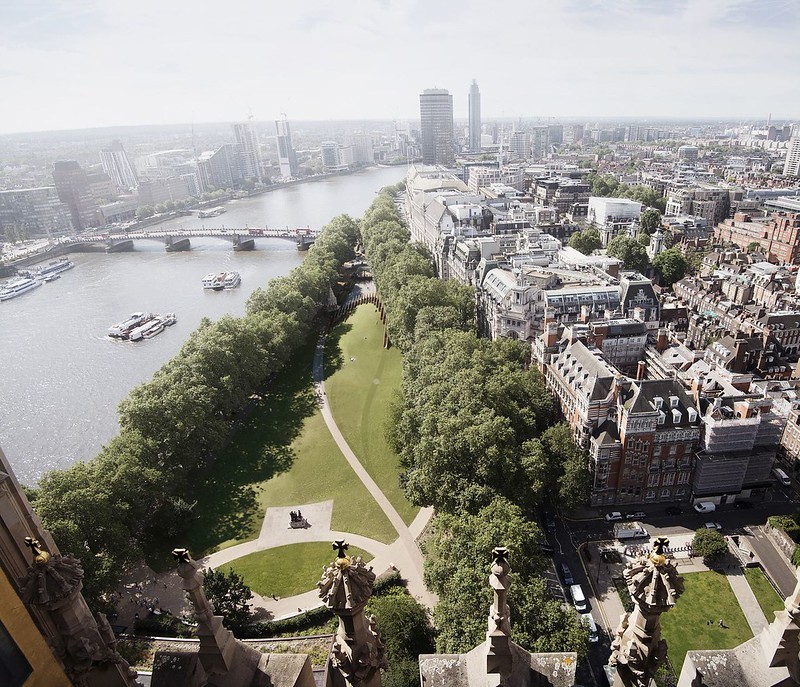
On International Holocaust Remembrance Day in 2015, 70 years after the liberation of Auschwitz, British prime minister David Cameron pledged to build a ‘new,’ ‘world-class’ Holocaust memorial and learning center in the heart of London. As recommended by his Holocaust Commission—set up a year prior to investigate “how the country should ensure that the memory of the Holocaust is preserved and that the lessons it teaches are never forgotten”—the memorial would “make a bold statement about the importance Britain places on preserving the memory of the Holocaust,” while the learning center would be “a must-see destination using the latest technology to engage and inspire vast numbers of visitors.” Cameron committed £50 million (€59 million) to the endeavor, pledging: “As Prime Minister I will ensure that we will keep Britain’s promise to remember: today, tomorrow and for every generation to come.”
Cameron would resign 18 months later following the June 2016 Brexit referendum, and although his pledge was carried on by his successors, Theresa May and Boris Johnson, the UK Holocaust Memorial remains unbuilt. The architect, David Adjaye, and the memorial’s location, Victoria Tower Gardens, have been selected. The UK Holocaust Memorial Foundation, established to oversee its realization, is chaired by the Conservative Lord Eric Pickles and Labour’s Ed Balls, an indication of the memorial’s cross-party support. It is also backed by leading figures in Britain’s Jewish community from Board of Deputies of British Jews president Marie van der Zyl to the country’s Chief Rabbi Ephraim Mirvis, who has characterized the work of building this memorial as a “sacred mission.”
New Holocaust memorial announced by David Cameron – 27th of January 2016 – BBC News
But the memorial has also attracted a formidable opposition coalition encompassing local residents, conservationists, historians, and Jewish members of the House of Lords. They worry about its design and environmental impact, but the core of the debate comes back to the fundamental question of what the UK Holocaust Memorial’s purpose should be. Rising levels of antisemitism in Britain make remembering the Shoah and assimilating its lessons necessary and urgent, and the memorial could provide an opportunity to address a hitherto under-discussed topic: Britain’s relationship to the Holocaust. Opponents counter that Holocaust remembrance is not ipso facto an antidote to antisemitism, and fear the Conservative Party is politicizing Holocaust remembrance.
*
It is not that Britain does not have a Holocaust memorial or museum. In London’s Hyde Park, there is a garden of boulders surrounded by white-stemmed birch trees. Built in 1983 and funded by the Board of Deputies, this was Britain’s first Holocaust memorial. The largest boulder is inscribed with a quotation from the Book of Lamentations: “For these I weep. Streams of tears flow from my eyes because of the destruction of my people.”
On the other side of the river, the Imperial War Museum (IWM) hosts a permanent Holocaust exhibition which re-opened last year after a £31 million (€37 million) refit. The IWM’s comprehensive Holocaust galleries introduce the visitor to prewar Jewish life in Europe, the rise of the Nazis and their ideology, and the impact of Nazi policy on German Jewry before walking them down the broken road to Auschwitz: deportation, ghettoization, the Holocaust by shooting in the east, and then the execution of the Final Solution in the death camps.
The final rooms look at the postwar search for justice and consider the Holocaust’s impact not only on survivors but the second- and third-generations too. Housed within the IWM, this exhibit examines the Holocaust not as an isolated event but as fundamental to the course and consequences of the Second World War. Britain also has a dedicated Holocaust museum in Nottingham: the National Holocaust Centre and Museum, also known as Beth Shalom. Founded in 1995, the museum’s primary audience is school-age children in contrast to the IWM’s broader audience. There is also a Holocaust exhibition and learning center in Huddersfield.
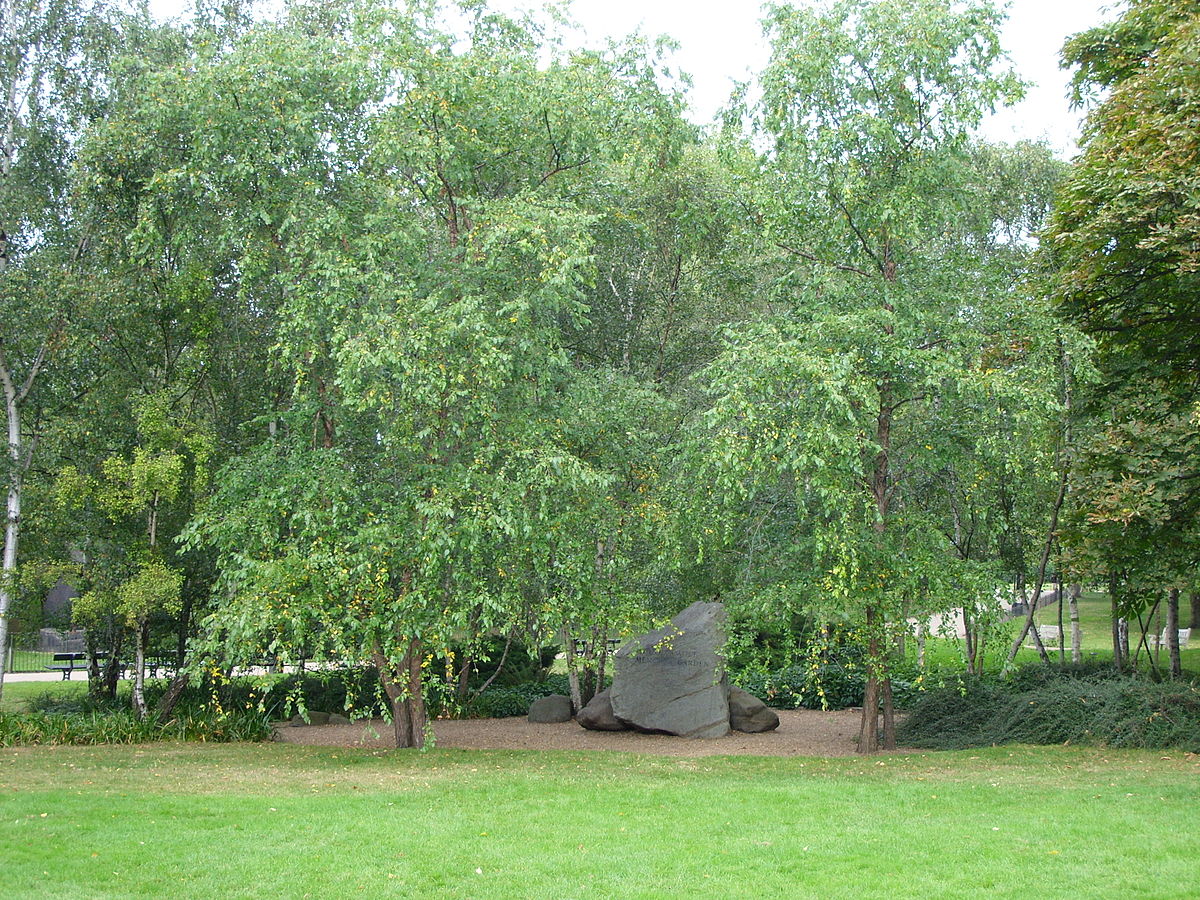
The Holocaust, then, it already extensively treated in exhibitions located the length and breadth of Britain. Yet it is also true that the country lacks a focal point for Holocaust remembrance of the kind found in other European capitals such as Berlin’s Memorial to the Murdered Jews of Europe, Vienna’s Judenplatz Holocaust Memorial, or Warsaw’s Monument to the Ghetto Heroes. The first takes up an entire city block and is located at the heart of power near the Reichstag, the Brandenburg Gate, and the American embassy. The memorial in Hyde Park is, by contrast, demure and obscure. In their submission to Cameron’s 2014 Holocaust Commission report, the Board of Deputies said:
There is a strong consensus that there remains no memorial in London that is fitting to the enormity of the catastrophe. The monument…in Hyde Park is insufficient in both its impact and location. …Many feel its inadequacy is bordering on offensive. We recognize the need for a new memorial. However, it should be more than just an inert statue and must contribute to real education about the Holocaust.
It is on this basis that Cameron moved forward with the UK Holocaust Memorial in January 2015.
Having considered Potters Fields Park by Tower Bridge across the river from the Tower of London and the Millbank area near the Tate Britain art gallery, in January 2016 the government unexpectedly plumped for Victoria Tower Gardens as the future site of the UK Holocaust Memorial. A relatively small green space, it was chosen for its location adjacent to the Houses of Parliament by the River Thames. “By setting history’s worst example of the disintegration of democratic values against the greatest emblem of Britain’s aspirations for democracy,” the government argues, the Holocaust memorial “will stand as a permanent reminder of the responsibilities of citizens in a democracy to be vigilant and responsive whenever and wherever those values are threatened.”
Over a year later, in October 2017, the winning design by Adjaye Associates and Ron Arad Architects was unveiled following an architectural competition. The Ghanaian-British architect David Adjaye’s design incorporates memorial and learning center into a single structure: a boomerang-shaped set of 23 large bronze fins of varying heights positioned at one end of a sunken stone plaza at the southern tip of Victoria Tower Gardens. The gaps between the fins, which are said to represent the 22 European Jewish communities “devastated by the Holocaust,” provide openings to the memorial’s threshold, a contemplative space, and the subterranean learning center.
Holocaust memorials often take their design inspiration from Jewish symbols: the Star of David, as in the case of the Athens Holocaust Memorial, or the menorah. Others like Vienna’s Wall of Names measure the Holocaust according to its human dimensions, viewing it as a tragedy of individuals and families. Adjaye’s design belongs to the same school as Berlin’s Memorial to the Murdered Jews of Europe or the New England Holocaust Memorial in Boston. These memorials are more abstract, depend in no small part on scale for their impact, and provide visitors with the space for reflection and the opportunity to project their own ideas and interpretations, reactions and emotions onto the memorial itself.
Berlin’s Memorial to the Murdered Jews of Europe can in that sense be said to be both a roaring success and a spectacular failure. It is an overwhelming space, unsettling and unmooring, the city disappearing as the visitor descends into the memorial’s heart via the alleyways between the gray stone sarcophagi. But as Israeli artist and satirist Shahak Shapira has documented, the memorial’s abstraction and the troubling, disconcerting feelings it begets cause some people to behave irresponsibly and disrespectfully. The Memorial to the Murdered Jews of Europe has become a site of fun and games and backdrop for moody Instagram photoshoots and selfies that end up on Tinder and Grindr.
Aesthetic criticisms of Adjaye’s design are by their nature subjective. Baroness Ruth Deech, a leading opponent of the memorial in the House of Lords, compared it to a “giant toast rack” and a “dinosaur’s rib cage,” while the conservative columnist Melanie Phillips has said it would “stand out in brutal contrast to its surroundings.” But critics also fear that, in its abstraction, London’s Holocaust memorial may suffer a similar fate to Berlin’s. “It doesn’t mean anything,” Deech, who favors a smaller, more “tasteful” memorial at the IWM, told me. “The design lacks either specific Jewish resonance or human sympathy,” Phillips wrote in The Jewish Chronicle. “Holocaust memorials in Europe which similarly stick out like a sore thumb have been desecrated or treated with disrespect.”
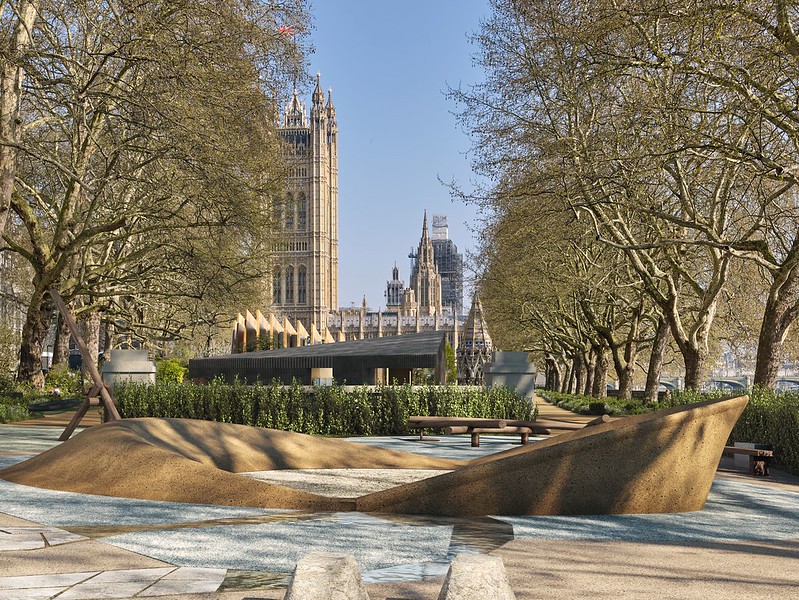
The great historian of the Third Reich Richard J. Evans has also questioned the historical basis for the monument’s design. In a critique published in the New Statesman, he described the 22 gaps between the fins representing 22 lost or persecuted Jewish communities as “entirely arbitrary” considering how borders shifted during the Second World War and Jews within certain countries like Yugoslavia had entirely different experiences of the Holocaust depending on whether they were Serbian or Croatian. States, moreover, are the wrong way to measure the Holocaust, Evans argued, for “a significant proportion of victims were foreign Jews, in most cases refugees, who were often the first to be handed over to the Nazis, as in Bulgaria, or Hungary, or France, precisely because they were foreigners.”
A coalition of interests from local residents and environmental groups to the park management charity Royal Parks has also objected to placing the UK Holocaust Memorial in Victoria Tower Gardens under the heading: Right Idea, Wrong Location. Some of their objections—the number of potential visitors, the increase in vehicular traffic—are run-of-the-mill NIMBYism. But opponents also note that this area of London is short of green space and that Victoria Tower Gardens already contains three other monuments, including Auguste Rodin’s Burghers of Calais. Any Holocaust memorial may detract from those monuments already fighting for people’s attention.
These objections were put forward to Westminster City Council, whose duty it was to consider the planning application for the UK Holocaust Memorial. In April 2019, Adjaye Associates and Ron Arad Architects put forward a revised design, one which lowered the height of the bronze fins in an attempt to alleviate local concerns about the memorial’s impact on its immediate environs and surrounding buildings. Nonetheless, by August, it seemed clear that Westminster City Council was set on rejecting the planning application, a move that would doom the memorial—at least in its proposed location.
Rather than sit back and await defeat, the government moved to take back control of the planning process, announcing in November 2019 that a public inquiry would decide the memorial’s fate. This meant that by the time Westminster City Council did indeed formally reject the planning application in February 2020, their decision was meaningless. The council said it was concerned about the potential impact the memorial would have on “existing monuments and the adjacent world heritage site of the Houses of Parliament and Westminster Abbey” as well as the “loss of valuable open, public green space in a very busy and popular location.”
The decision that mattered came in July 2021 when, following the public inquiry held over October and November 2020, the Secretary of State for Housing, Communities and Local Government Robert Jenrick approved construction of the memorial. Jenrick considered the harm the memorial might cause to existing heritage sites in the vicinity like Westminster Abbey as well as to Victoria Tower Gardens, but concluded that “the important public benefits of the scheme, taken together, are sufficient to demonstrably outweigh the identified harm that the proposals have been found to cause.” Deech countered: “I’m hard-pressed to see what the public benefit would be.”

Planning permission had been granted, and it seemed as if was full steam ahead. That was until the High Court granted the London Historic Parks and Gardens Trust, which opposed the decision, the right to apply for a Planning Statutory Review—which is to say, an appeal. The court found against the government, in part, because they had failed to consider the IWM as an alternative location for the memorial, as Deech favors. That review went before the High Court in February; in April, the court quashed the memorial’s planning permission, arguing the government had failed to consider a 1900 law which prohibits Victoria Tower Gardens from being used as anything other than a public park.
The government is now considering its next move. It could ask the Court of Appeal to consider their case, initiate a new planning process, or repeal the law blocking construction in Victoria Tower Gardens. The expected completion date for the memorial has been pushed back to at least 2025. Meanwhile, its budget has ballooned from £50 million (€59 million) in 2015 to £105 million (€125 million) today.
*
“Holocaust recognition is our contemporary European entry ticket,” Tony Judt recognized in a 2005 essay “From The House of the Dead.” To acknowledge one’s responsibility for the suffering of the Jewish people through commemoration and memorialization became part of being European. In the first decades of the twenty-first century, from Paris’ Mémorial de la Shoah to the Holocaust Memorial Center for the Jews of Macedonia in Skopje, Holocaust museums or houses of memory proliferated across Europe. Wrote Judt: “The recovered memory of Europe’s dead Jews has become the very definition and guarantee of the continent’s restored humanity.”
But it was not only in countries where the Holocaust took place that such museums bloomed. In 1993, then-president Bill Clinton opened the enormous United States Holocaust Memorial Museum on the National Mall in Washington D.C., which alongside Yad Vashem has become one of the world’s two great Holocaust museums and centers of study and learning. Thereafter, Holocaust memorials and museums opened across the United States in cities large and small from Boston and Los Angeles to Boise, Idaho and Albuquerque, New Mexico. These museums raise an interesting question, for which also applies in the British case: When a nation is neither a perpetrator like Germany, a collaborator like France or Hungary, or a victim like Poland, what is the purpose of a Holocaust memorial?
In America, many Holocaust museums like the Dallas Holocaust and Human Rights Museum tie past with present, their missions bound up with the aims and values of the United States such as defending and promoting human rights around the world. At the opening of the United States Holocaust Memorial Museum—seizing the initiative with the compelling and urgent double negative, “Mr. President, I cannot not tell you something”—Elie Wiesel implored: “I have been in the former Yugoslavia last fall. I cannot sleep since what I have seen. As a Jew I am saying that. We must do something to stop the bloodshed in that country.” For Americans, the Holocaust has become a warning and a call to action—even if it is not always heeded.
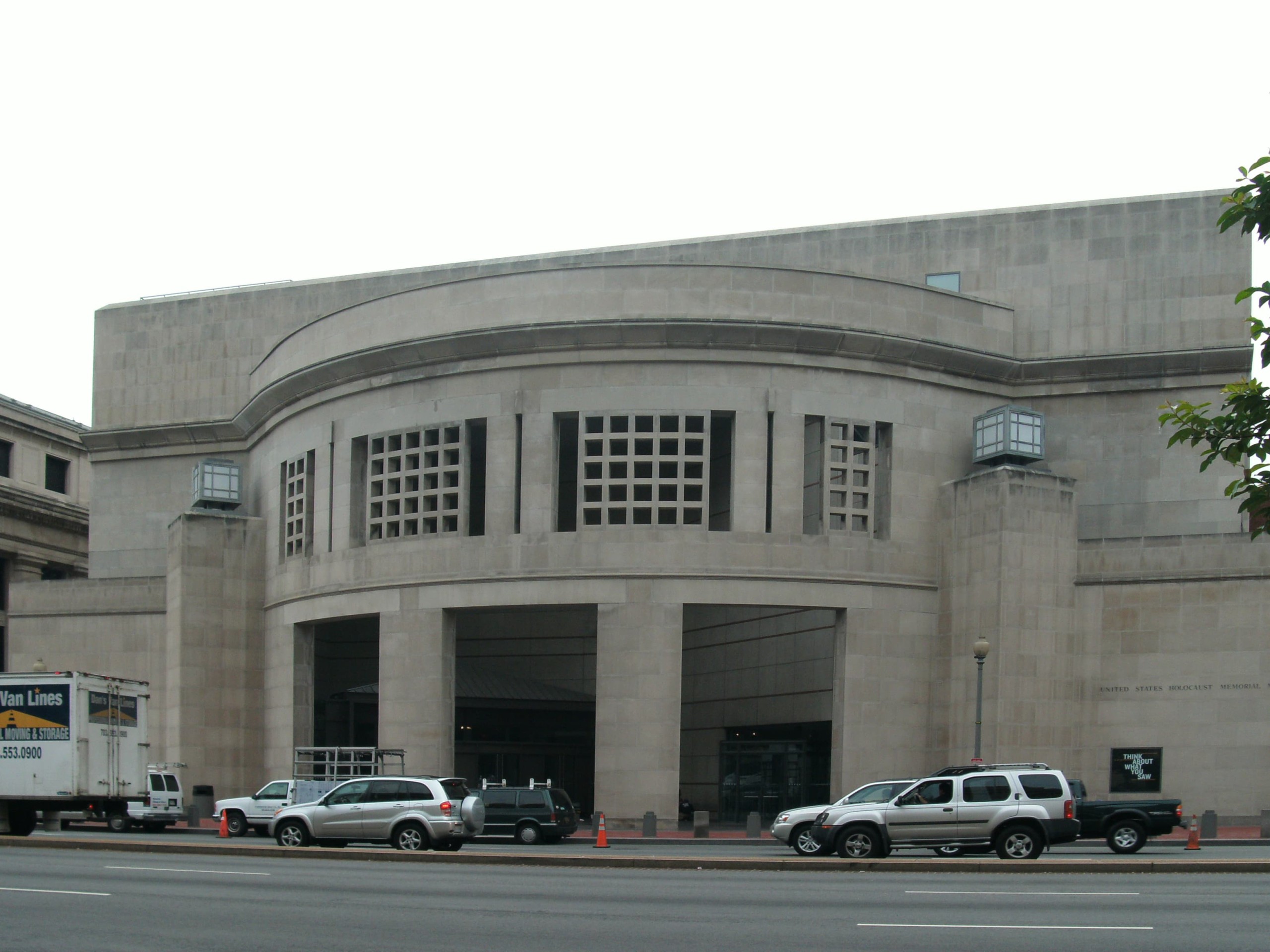
In January 2019, then-Swedish prime minister Stefan Löfven moved to establish a Holocaust museum in Stockholm as part of his government’s reckoning with historic and contemporary antisemitism. Sweden was neutral during the Second World War, yet Löfven believed Swedes had an “obligation” to “learn from history” as “although the killing did not take place on Swedish soil, Sweden both influenced and was influenced by what happened.” The Holocaust is a part of Swedish history for better—it was to Sweden that thousands of Jews fled Denmark by boat in August 1943—or worse, with sales of Swedish iron ore to Nazi Germany helping maintain its war effort. The Swedish Holocaust Museum is due to open in July 2022.
In order to distinguish itself from the Imperial War Museum’s (IWM) permanent galleries on the Holocaust, whose outlook is broad and comprehensive, the government’s ambitions for the learning beneath the UK Holocaust Memorial make it seem as if it will be, like the Swedish Holocaust Museum, parochial and national in character:
The thematic exhibition will set the Holocaust within the British narrative: historically, politically and culturally. This narrative will be balanced, addressing the complexities of Britain’s ambiguous responses to the Holocaust, avoiding simplistic judgements and encouraging visitors to critically reflect on whether more could have been done, both by policymakers and by society as a whole.
The idea of a Holocaust memorial that has a physical and spatial relationship with the Houses of Parliament and learning center containing a “thematic exhibition will set the Holocaust within the British narrative” is one with tremendous potential. As I argued back in 2015 when the memorial was first announced, the learning center could be “tasked with completing the work of preserving audio-visually the testimonies of British survivors of the Holocaust” as well as “examining Britain’s role in the Holocaust in much the same way that museums in Paris [and] Copenhagen look at their own national experiences.” If the learning center could be the forum for an autopsy of Britain’s historical record, “it will be welcome not only as an addition to London’s face, but its soul as well.”
That historical record of course includes the Kindertransport. As the late, great Holocaust historian David Cesarani wrote in Final Solution: The Fate of the Jews 1933-49, after Kristallnacht in November 1938, “Britain became the only country to ameliorate its immigration rules as a direct response to the unfolding tragedy” in the Greater German Reich. Around 50,000 German, Austrian, and Czech Jews reached Britain in the nineteen months following March 1938, including 14,000 women who applied to work as domestic servants and 9,000 unaccompanied children who came on the Kindertransport by train from Berlin, Vienna, and Prague to the Netherlands, where they were transferred to ferries that took them to Britain.
“This operation was virtually the only successful attempt at the mass evacuation of Jews from Germany and the territory it controlled,” Cesarani writes, and it is a part of British history commemorated with a memorial at London’s Liverpool Street station and chronicled in numerous books, plays, and films. “Ironically,” he adds, “it was made possible by Britain’s refusal to consider increasing Jewish immigration to Palestine.” After the First World War, Palestine became the responsibility of the British, tasked with establishing a “national home for the Jewish people” there without “prejudic[ing] the civil and religious rights of existing non-Jewish communities.”
As in much of the Empire, as opposed to favoring one side over the other, Britain practiced a long-established colonial policy of divide and rule. Many leading British politicians were amenable to Zionism, yet in response to Arab unrest in 1929 and 1936, Britain moved to restrict Jewish immigration to Palestine out of purported economic and political considerations. Britain’s final, deadly move was the White Paper of 1939, which set a quota for Jewish immigration of 75,000 permits over the course of the next five years. During the Second World War, Palestine was a life raft for a half million Jews; one need only consider how many more could have been saved had British immigration policy been more generous.
Much the same could be said of the Évian Conference. The British Foreign Office approached the conference on German and Austrian Jewish refugees “almost with dread,” Cesarani writes, fearing that to admit Jews from these countries would open the gates to refugees from Poland and Romania. Here, the government was guilty of succumbing to domestic political considerations, including antisemitism among the British population. Any UK Holocaust memorial worth its salt ought to consider this, as well as the rise and fall of the British Union of Fascists, the consequences of Britain’s policy of appeasement towards Nazi Germany, and pro-Nazi sentiment in certain corners of the British establishment up to and including former King Edward VIII.
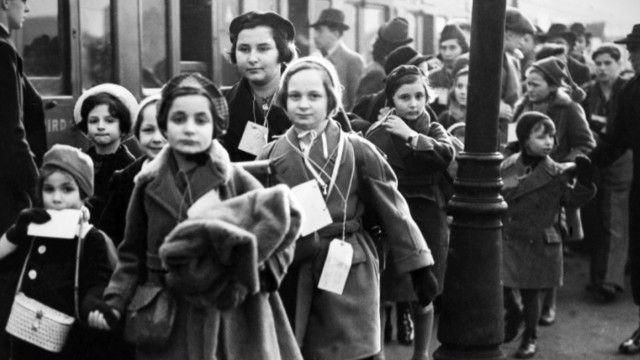
The Kindertransport too is not a story with all light and no shade. “While the Kindertransport operation produced genuine heroes, it was marred by a slapdash approach,” Cesarani observes. Upon arrival in Britain, those children without a foster home were housed in unused summer holiday camps. Prospective foster parents came to pick out children like they were selecting meat at the butcher. Siblings were separated for years at a time, while those in charge of the Kindertransport program were “criticized at the time for not paying sufficient attention to the children’s cultural or religious backgrounds. … Jewish children from Orthodox backgrounds frequently ended up with non-Jewish families who did not have a clue about their needs.”
This is to say nothing of how many Jewish adults were treated upon arrival in Britain. In 1940, classified as ‘enemy aliens’ on the basis of nationality, thousands of mostly German, Austrian and Italian Jewish refugees living in Britain were held throughout the course of the war in internment camps on the Isle of Man. British policy in Palestine also did not improve much after the war, with Britain turning around ships and sending newly liberated Jews attempting to enter Palestine to Displaced Persons’ camps on the island of Cyprus. In addition to divide and rule, Britain’s time in Palestine ended with another tried-and-tested colonial policy: cut and run.
The government states that the new memorial “will stand as a reminder of the horrors of the past and will encourage reflection on their implications for British government and society, both at the time and subsequently. The view of Parliament from the memorial will serve as a permanent reminder that political decisions have far-reaching consequences.” Done right, the UK Holocaust Memorial would leave visitors with a rather ambiguous impression. It would be a question rather than a statement, an examination of what was done, but more important, what could have been done to alleviate Jewish suffering in moments when Britain chose to close the door and turn away.
Unfortunately, however, there appears to be a gap between the purported aims of the learning center and the government’s current interpretation of those objectives. “No one has seen them,” Deech told me of concrete plans for the learning center, and members of the memorial’s Academic Advisory Board to whom I reached out either declined or did not answer my requests for comment. Deech did outline what she knows. The learning center will consist of four small rooms that will take about 45 minutes to view. One, she said, will be devoted to a mock-up of the House of Commons in wartime. One will tackle antisemitism. The other two focus on the persecution of other minorities and other twentieth-century genocides, which may in such a small space detract from the uniqueness and essential Jewish centrality of the Holocaust.
The overarching theme of the learning center, according to Lord Eric Pickles, co-chair of the UK Holocaust Memorial Foundation, will be “British values.” First set out in the ‘Prevent’ anti-terrorism strategy in 2011, these “fundamental British values” were conceived during the 2010-2015 Conservative-Liberal Democrat coalition government and include “democracy, the rule of law, individual liberty, and mutual respect and tolerance of those with different faiths and beliefs.” Since 2014, British schools have had to “actively promote” these values “to ensure young people leave school prepared for life in modern Britain.”
Deech fears the learning center will end up being “four small rooms used to promote a particular political agenda.” Critics of ‘British values’ note that democracy, liberty, and the rule of law are not so much British as universal values, and that values cannot be instructed but rather are conceived together as a society. Deech says that “Britain is using this project a bit like some eastern European countries do. They’re taking the Holocaust narrative and turning it around to suit the British political narrative. You might even say it’s a Conservative project, signaling: ‘We are not the party of antisemitism, we’re setting up a Holocaust memorial. It’s a highly political project and the people funding it are those who might very well fund the Conservative Party as well.’”

Wherever they may be, Holocaust memorials are inherently political. They arise out of a political and societal reckoning with the past, an acknowledgement of responsibility and suffering. The decision to build a Holocaust memorial and lay down a marker that the Holocaust is important and worthy of commemoration is a political act as well as a signal of intent and a nation’s priorities. There is, therefore, nothing inherently surprising or indeed devious or deceitful about the fact that, in January 2016, David Cameron said of the memorial that it will “stand beside Parliament as a permanent statement of our values as a nation and will be something for our children to visit for generations to come.”
But this specific linkage of the UK Holocaust Memorial to so-called British values has aroused concern among historians. “This amounts to the political instrumentalization of the Holocaust,” Richard J. Evans has written. In September 2020, a group of Holocaust scholars led by the University of Edinburgh’s Hannah Holtschneider put their names to a letter which argued that “situating the UK Holocaust Memorial next to the Houses of Parliament is likely to create a celebratory narrative of the British government’s responses to the Jewish catastrophe during the Nazi era and beyond. Situating it so close to parliament is almost certain to add to the mythology of ‘Britain alone’ as the ultimate savior of the Jews which negates several decades of careful scholarship and research.”
Summing up his critique of the UK Holocaust Memorial in its proposed form, Evans wrote that it “would be an unnecessary duplication” of the IWM’s “more important collections and displays”:
It would be on a smaller scale, and so less comprehensive and less effective, and…the [IWM], located less than a mile away from the Palace of Westminster, is already the national Holocaust memorial center and it remains the premier location for a comprehensive and scholarly coverage in the UK of this most tragic episode in human history. …Compared to…the US Holocaust Memorial Museum…, the Westminster memorial would only be an embarrassment for Britain if it laid claim to be the national institution of learning and research on the Holocaust.
When I contacted Evans for comment, he declined my interview request. “Nothing to add,” he said. “A lost cause now, of course.”
*
“It is human nature that, occasionally, we fail to appreciate the extraordinary blessings which have been bestowed upon us,” Chief Rabbi Ephraim Mirvis has written. He described the decision to build the UK Holocaust Memorial as a “significant moment in British history”: “We should be emphatic in our support for this initiative, for the sake of the victims and the survivors of the Holocaust, for the sake of our country and, ultimately, for the sake of the generations to come.” The memorial is a manifestation of the government’s resolve “to learn from the tragedy of our past in order to guarantee the right of all people to a life of safety, dignity and freedom,” Mirvis concluded.
The memorial’s scale, its vividness and boldness, and its proximity to the seat of British parliamentary democracy speaks to the aspirations the government has for the UK Holocaust Memorial and the prominence it wishes for it to have. But their plans for the learning center do not match those ambitions. It would diminish rather than develop Holocaust remembrance and knowledge, making commemoration of the midnight of the twentieth century subservient to the state’s political agenda. Without an exhibition that matches the memorial’s audacity and looks at the darker aspects of British history with a steady eye, the UK Holocaust Memorial will be a head without a brain, an undedicated tomb, a conceptual failure and an expensive, wasted opportunity.
Liam Hoare
